UPDATED REVIEW | March 2024 | Suzuki MDG-300, MDG-330, MDG-400 Digital Grand Pianos | I have reviewed a number of Suzuki digital pianos in the past and I have not recommended any of them so far. The MDG300 ($1999 internet discount price), MDG330 ($2699 internet price), and MDG400 ($3299 internet price) have been out for a number of years and are Suzuki’s lower price digital grand pianos that look good on the outside, but in some ways are not so good on the inside. The MDG300 is a 2’4″ deep micro-grand size, the MDG330 is a larger 3’3″ deep micro-grand size, and finally the MDG400 is the 4′ deep mini-grand size. These pianos are manufactured in China by another less well known piano company, so Suzuki does not design or manufacture their own pianos, as far as I know.
UPDATE: May 1, 2024 – These 3 Suzuki digital grand pianos are now being blown out and likely discontinued after being on the market for approx 10 years. You can find them advertised on-line for approx 30% to 50% off original price while they last. At these prices you might think these models are worth buying. But I would suggest otherwise as you continue to read my review.
INTRODUCTION
It is important to note that all three of these models are identical in every way except for cabinet size, color offerings, and speaker system power. They all have the same functions and features so it’s really all about cabinet size and available finishes…and of course…what you can afford to spend. Pianos that are attractive with color display screens built in seem like they would be very nice pianos from the way the outside cabinet appears. Some of the specific colors offered in the smallest MDG300 are quite unique and can be attractive in the right surroundings. When playing these pianos, if you just quickly play a few keys and listen, you might think the piano sound is good, especially if you are not at least at an intermediate piano playing skill level and/or have had little experience playing real pianos or good digital pianos.
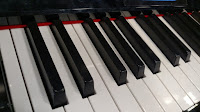 The piano key action is by far the most important part of any digital or acoustic piano. Key actions can either be built cheaply or they can be built in a way where those key actions are clearly more responsive, more realistic, better built, more substantial, and just overall better moving keys that move up & down in a smoother and more natural way. But to get a better key action the manufacturer has to spend more money doing so…and that’s mainly where these three models fall down. The key action in all three models are noisy and they make noticeable knocking sound when hitting bottom after the key is depressed. When the keys come back up they are also noisy, especially the black keys, and this kind of key action noise is an indicator of a cheaply made key action.
The piano key action is by far the most important part of any digital or acoustic piano. Key actions can either be built cheaply or they can be built in a way where those key actions are clearly more responsive, more realistic, better built, more substantial, and just overall better moving keys that move up & down in a smoother and more natural way. But to get a better key action the manufacturer has to spend more money doing so…and that’s mainly where these three models fall down. The key action in all three models are noisy and they make noticeable knocking sound when hitting bottom after the key is depressed. When the keys come back up they are also noisy, especially the black keys, and this kind of key action noise is an indicator of a cheaply made key action.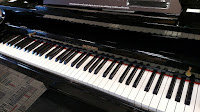 The keys themselves are cheap feeling white plastic like an inexpensive $100 keyboard and the keys are thin on the edges making for a potentially unpleasant playing experience. On some of the keys I also noticed that a few of them take more pressure to press down while others are lighter, so they are uneven at best. The keys that are near each other should all take about the same amount of finger force to press down so that you can get a consistent level of volume from all keys.
The keys themselves are cheap feeling white plastic like an inexpensive $100 keyboard and the keys are thin on the edges making for a potentially unpleasant playing experience. On some of the keys I also noticed that a few of them take more pressure to press down while others are lighter, so they are uneven at best. The keys that are near each other should all take about the same amount of finger force to press down so that you can get a consistent level of volume from all keys.
 When that doesn’t happen then this situation can hurt your piano playing, throw off your technique, and make you change your playing to compensate for the poor key action movement and response in these pianos. The keys in these pianos are also overall noticeably stiff to press down when playing lightly or softly than what you would be experiencing on a regular acoustic piano. Being that I am a long time experienced piano teacher and pro musician, I can tell you that if you have a child taking piano lessons on these pianos then this key action problem will help to create bad playing habits that will be difficult for a student to break if they go on for too long.
When that doesn’t happen then this situation can hurt your piano playing, throw off your technique, and make you change your playing to compensate for the poor key action movement and response in these pianos. The keys in these pianos are also overall noticeably stiff to press down when playing lightly or softly than what you would be experiencing on a regular acoustic piano. Being that I am a long time experienced piano teacher and pro musician, I can tell you that if you have a child taking piano lessons on these pianos then this key action problem will help to create bad playing habits that will be difficult for a student to break if they go on for too long.Next in line of importance comes the piano sound. The stereo piano sound is OK and better than in previous models, but is not great. I always say that you should not rely on the manufacturer and their on-line marketing material saying the piano is so wonderful in every way…what else would expect them to say:). The reality always is that many of these new digital pianos will be less than great when you finally get a chance to play them. When playing the Suzuki pianos I found that there is a problem with the keys controlling the volume properly when the keys are going up and down. This has nothing to do with the 128-note polyphony which is the maximum notes in mono sound that can be heard at the same time when playing the keys and using the pedals. But it does have to do with the fact that the piano volume that the keys produce on digital or acoustic pianos is normally supposed to get incrementally louder or quieter depending on how much force you apply to the keys with your fingers.
Piano key volume control is also called “expression” and it is one of the ways the player is communicating their music…with volume dynamics when playing the keys down. Without good, smooth volume dynamic control from the keyboard, the song becomes either boring because there are no dynamics, or the song expression and dynamics becomes choppy and uneven…and that’s exactly what happens on the MDG digital pianos. The volume of the notes when pressing the keys down is choppy and jumpy and not easily controlled to be incrementally louder or quieter, especially as compared to a real acoustic piano or many other good digital pianos. Simply stated…the volume is just not even from one note to the next or when playing a key up & down.
Beyond the topic of the uneven and inconsistent piano sound is the range of tone in the piano sound when playing the keys. Range of tone is also known as tonal dynamics and it’s the range from mellow tone to bright tone when playing the keys lightly or playing with more force or anywhere in-between. Tonal expression and dynamics happens on all good music instruments including guitars, drums, horns, woodwinds, strings, etc. When you press a real piano key lightly, the hammer in the piano strikes the string softly and the string produces a more muted, mellow tone. As you press the key harder and harder, the hammer strikes the string harder which produces a brighter and brighter tone because the string vibrates more. It’s this mellow to bright tonal range that really brings out expression (tonal colors) in the music and in your songs.
These Suzuki pianos do not have a good range of tonal expression and when this happens then it means a sign of cheap electronics. The range of tone in the MDG300, 330, and 400 is quite compressed and not near as expressive as it should be. If you do not play the piano then you may not be at a point where you will notice this deficiency. But as you become a better player and if you hear what a real piano actually sounds like, then you will instantly know what I am talking about. Bottom line…the tonal expression on these pianos in my opinion is not even as good as some basic name brand digital pianos that sell for $700 and less. But hey…you want that grand piano cabinet appearance…don’t you?:)
The three pedals on the piano do control the normal piano features of soft pedal, sostenuto pedal, and damper/sustain pedal. However real pianos have a variable amount of sustain for the right damper/sustain pedal and allows for incrementally more or less sustain which is called “half-damper.” The damper/sustain pedal on the Suzuki pianos only allows for on/off sustain control whereas most digital pianos these days have the half-damper sustain control which allows the music to be played more naturally like a real piano. Beginners will not notice this lack of “half-damper” effect for a a while and even some recreational players may not care one way or the other. But if you do play the piano then not having this feature which is normally found in real pianos may be a problem for you and your music. The pedals also seem to be made cheaply and look like they are prone to having issues with pedal noise or squeaking.
All three of these pianos produce a big volume of sound coming out of the internal speaker system so there is no shortage of overall big volume. However, based on my experience with the MDG’s, the internal speaker audio system is not good quality because when you set the master volume past half way, then the volume is out of control where you cannot play the keys lightly and get a soft volume like you would on a normal piano. In other words, setting the master volume too high, even past just half way which normally should be fine, is not good on these pianos and completely throws off the dynamics and volume control when playing the keys. Trying to play softly on the keys is just not possible when you increase the master volume. A good digital piano with a competent internal speaker system will not do that. On a good digital piano with a good internal speaker system you can increase the master volume to a very high level and still play normally with proper control of dynamics including be able to play softly when playing the keys lightly. This is not possible with the MDG pianos, so again, if you like that nice looking cabinet enough to overlook these problems, then that is your choice:).
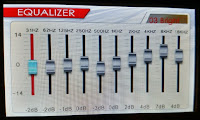 So what do these pianos offer that I like? Well, what I like has to do with all the other stuff these pianos do…all those cool electronic features referred to as “bells & whistles” that can make it fun to play music. Each of these pianos has lots of fun features such as having 122 instrument sounds which includes trumpets, guitars, trombones, strings, timpani, synthesizers, and many others. The instrument sounds are high quality and really no better than what Is offered on cheap Yamaha & Casio keyboards. But if you want some extra sounds at least they are there.
So what do these pianos offer that I like? Well, what I like has to do with all the other stuff these pianos do…all those cool electronic features referred to as “bells & whistles” that can make it fun to play music. Each of these pianos has lots of fun features such as having 122 instrument sounds which includes trumpets, guitars, trombones, strings, timpani, synthesizers, and many others. The instrument sounds are high quality and really no better than what Is offered on cheap Yamaha & Casio keyboards. But if you want some extra sounds at least they are there.
You can also play MIDI songs from a memory card so that you can play along with music that you may like and learn it that way by ear of by music if you can find it somewhere. The ability to layer or split different sound on the keyboard is nice and there are also 100 interactive accompaniment styles from Latin to Rock, to Pop, jazz, country, and everywhere in-between with variations and controls for start/stop, fill-in’s, into/endings, and adjustable volumes for the different parts.
The MDG pianos also have transpose feature, rhythm tempo control, metronome, reverb and chorus special effects, adjustable digital EQ settings with 10 digital graphic faders to control the sound environment coming out of the speakers or through headphones, and 10 registration memories to save your own setups. In fact there are so many different interactive features that you will unlikely use them all as most people typically don’t get that deep into that technology…but maybe you would? It just depends on what you want to do with your music. So when it comes to some cool digital features and being able to use them, these models do a good job in that area.
All of the digital features are displayed on an attractive 4.3″ color screen which makes the appearance of the piano control panel look more advanced. Along with the color display screen (which is not a touch screen) are a variety of buttons which gives the user better and quicker access to some of the more popular features of the pianos. So when you combine the versatility of the color screen with the buttons, these pianos are fairly easy to use and therefore it is more intuitive to find the features that you are looking for. I wish more manufacturers would incorporate a color screen into their pianos but personally I would not sacrifice the quality of the piano playing experience (touch, tone, pedaling) just to get a cool color touch screen. I like them, but I don’t like them that much:).
The MDG pianos also have a nice recorder/player system in them that allows you to record 3 separate parts or tracks which can be saved to a SD card. In this way you can record left & right hand separately and then play and record another different part or sound over the other two parts. This makes creating songs more fun and also allows you to play along with your own recordings. However, the SD card where you would save your music in this piano is a very old format of saving songs. It would have been much better to have a standard USB flash drive input instead which is better technology and more available. That’s another sign of old technology which should have been updated in these models.
I like the fact that there seems to be some good connectivity in these pianos including a microphone input, stereo headphone jacks, audio input jack, audio output jack, and MIDI in & output connectors. Having a place for a microphone is a nice feature and makes it fun to be able to sing through the piano even if you are not playing it. The other features are good as well and there are pianos in this price range that don’t have as many connections. The MDG pianos also have some technology features for connectivity including Bluetooth and USB output to device so that you can wirelessly connect to any device that has Bluetooth connectivity so that you can send your music through the piano speaker system. Also you can connect your piano by USB output to a computer or other external devices for interaction with apps and computer programs that can help you in learning to play the piano.
So in reality there is a lot to like about these pianos. Number one is the way they look, the design, and available impressive array of colors including the MDG400 in polished ebony and polished walnut, the MDG330 in polished ebony, and the lower priced and smaller MDG300 available in polished ebony, polished brown, polished mahogany, polished cobalt blue (yikes!), and polished bright red. I thought there might also be a white color which is popular, but they don’t have it. I am guessing that all these colors are offered only in the smaller micro-grand 2’4″ model because of the much smaller size and much lower price and most people just want the classic polished ebony, especially in the larger sizes. Plus…polished ebony has by far the best resale value of all the colors. The speaker system in the MDG300 and MDG330 are both the same…120 watts total power with 2 amplifiers going into 6 speakers. The MDG400 has 120 watts of power with 3 amplifiers going through speakers so all three models have plenty of power. But as I mentioned earlier, a lot of audio power is meaningless if you cannot play the keys properly (cannot play softly) while the master volume is up higher than half-way. So the piano speaker specifications don’t necessarily tell the true story.
Here is what a shopper must decide when thinking about buying a digital piano such as the MDG300, MDG330, or MDG440. What is more important to you…the way the piano looks with all the “bells & whistles” or the way the piano actually plays as a piano? Yes, for many people the cabinet appearance is very important and there will be some shoppers who just won’t care about the piano playing issues and deficiencies in these pianos and will be so impressed with the cabinet design, colors, and sizes offered that they’ll just “live with the piano playing issues” and get the piano anyway because they like the look so much and it’s in their budget. I will also say that the quality of the finish on these pianos with regard to durability is questionable in my opinion. Just because they look good does not mean that the cabinet finish will be durable and hold up over time. But what do you expect in this price range.
Keeping down production costs is almost always the “name of the game” for these kinds of pianos because once you increase quality of construction, cabinet, speakers, key action, piano sound, and pedaling, then the price goes way up and that’s why the top name brands are so much more money. You just do not get something for nothing when it comes to these digital pianos. You might think you are just not sophisticated enough to tell the difference between a good piano and a poor piano and I have heard that way of thinking from people before. But don’t fool yourself…if you love piano playing and good piano sound, then you will notice a difference between something that sounds and plays great as opposed to something that looks great but may not actually be great.
Personally I would rather invest more money for a digital grand piano from Kawai, Yamaha, Roland, or Orla than put any money into these Suzuki pianos or other brands like them. Or…I would rather spend my $1500 – $3500 (or more) on a new vertical size digital piano model from any of the top digital piano companies such as the newer Yamaha Clavinova CLP735, or the Casio PX870, AP550, or the newer Kawai CA401, CN201, the popular Kawai ES920, or Roland HP704. The reason I “semi-recommend” these Suzuki pianos is because maybe you don’t really care as much in how they play as pianos as you do in how they look along with all the “fun” features. That’s the reason I don’t really recommend these models.
But there are much better alternatives in the world of digital pianos in my opinion when it comes to getting the best possible piano playing experience for your budget although some of those alternatives may not be in that little grand piano shape:). There is a reason, for example, why the Suzuki MDG300 or MDG330 has a lower price as compared to the good “top name brand” digital mini grand pianos in that price range. This is because the cost of that Suzuki piano mostly goes into the cabinet and the color display screen, although the cabinet seems to scratch fairly easily as it looks like there is only a thin coat of the finish.
To keep that price lower for the MDG300 and others, you need to give up something somewhere in the piano (as I mentioned earlier). So in my experienced opinion there are definitely big concerns I have with the Suzuki key action, key action contacts, key sensors, keys, piano sound chip, and speaker system in these pianos and those are things you cannot really see, but nevertheless are very important. When making up your mind, please consider all these things before you make your purchase, regardless of what brand and model it may be.
If you want more info on new digital pianos and LOWER PRICES than internet discounts, please email me at tim@azpianowholesale.com or call direct at 602-571-1864.





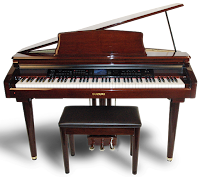


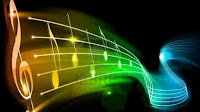
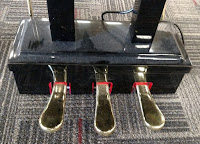
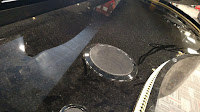
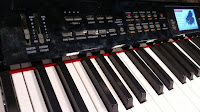

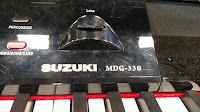

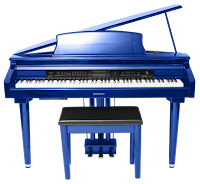
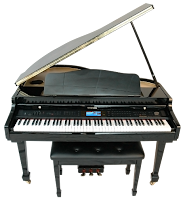
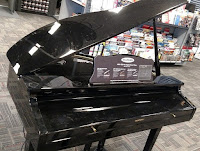











Hello Tim:
I have read your comment regarding Suzuki MDG-400 digital grand piano and I become hesitate to purchase it! But for the price and the look of it is very impressive! I'm keep thinking whether or not getting one because of the bells and whistles and that it also has the beautiful look at an affordable cost. I have 2 kids are taking lessons and I want them to have fun playing on the piano, so they will some passion to keep on learning and practicing to become better and better. I would like to know what you think about this. However, there is another Suzuki MDG-4000ts model that is on sale at $2,799. Have you ever play on this one? or Do you know if there is any better on this model than MDG_400 model?
Thank you,
William
Absolutely the best and most informative review on the internet.
Thanks
Absolutely the best and most informative review on the internet.
Thanks
Thanks for the tight review. I repair digitals of all types and these are absolute garbage. The parts are very cheap. The keybeds are bad within a year from a normal amount of playing and barely any parts are available. I hope someone thinking about getting one of these reads this because, ya they look great but are garbage.
Thanks for this very helpful review.
Has anyone came across an issues with the keys falling ?